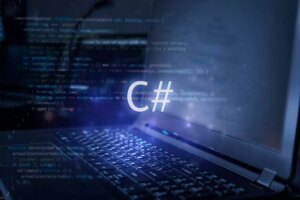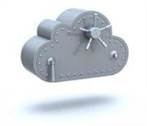Software development
What Is Teamcity Cloud
We are now extending this fleet of agents to ensure more user scenarios are covered. We’re introducing Build Cache to the list of build features in TeamCity. Build Cache will help you optimize your CI/CD runtime by downloading the files that your build depends on once and then reusing them within the project. After an initial build run, subsequent builds will run faster as you won’t have to download the files again.

We are confident that TeamCity Cloud is ready to be at the heart of the development process in almost every environment. But if you feel that we’re absolutely missing anything, please let us know. The old name format will be preserved as an easy and short alias to a default OS version. This will help us to preserve backward compatibility with the existing requirements.
Clear Build Queue if It Has Too Many Builds due to a Configuration Error
Continuous Integration is a software development practice in which developers commit code changes into a shared repository several times a day. Each commit is followed by an automated build to ensure that the new changes integrate well into the existing code base and to detect problems early. For advanced integration, a custom plugin will be necessary to store and present the data as required. See Developing TeamCity Plugins for more information on plugin development. The build progress can be reported to TeamCity via service messages and build status text can also be updated. For an advanced integration a custom TeamCity plugin can be developed in Java to ease tool configuration and running.
Powered by the latest AWS Graviton3 processors, they also boast better performance compared to the x86 versions. Previously, TeamCity Cloud offered JetBrains-hosted agents on Ubuntu 20.04 and Windows 2019. In the next two years, these OS versions will come to the end of their standard support timeline (January 2024 for Windows Server 2019 and April 2025 for Ubuntu 20.04). We’re also introducing the new “Only if build status is failed” execution policy for individual steps. In addition to that, we’re also adding integration with Bitbucket Server and Data Center, several UI improvements, and accelerated artifact uploads.
Sakura UI: introducing revamped Agent Parameters tab
The terminal allows you to debug and maintain your cloud agent machines. Previously, an agent name consisted of an OS name and size, but our new agents don’t fit this model. The new format will include a specific OS name, version, size, and, optionally, architecture. Debugging such configurations gets even more complicated if your local machine has a different architecture. The good news is that TeamCity improves the user experience when undertaking this task. For the new ARM Ubuntu agents, both the per-minute and per-month prices are the same as our current pricing for the x86 versions of agents of the same size.

After a build is triggered, it is placed into the build queue and is started when a compatible agent becomes available. After the build is finished, the build agent sends build artifacts to the server. Thus, in a single build you can have several steps and sequentially invoke test tools, code coverage, and, for instance, compile your project. ℹ️ You can find the full list of software installed on build agents in our documentation.
TeamCity has multiple features to handle orchestration part of the deployments with the actual deployment logic configured in the build script / build runner. TeamCity supports a variety of generic build tools, so any specific tool can be run from within TeamCity. To ease specific tool usage, it is possible to wrap it into a meta-runner or write a custom plugin for that. This greatly simplifies the login process while still ensuring security. Thanks to JetBrains-hosted agents, you can start building quickly, as you don’t need to spend time on initial agent setup and maintenance.

Skip this section if you want the instance created in the previous step to directly connect to a TeamCity server and serve as a stand-alone agent machine. Otherwise, if you want TeamCity to automatically scale the number of active cloud agents based on the current workload, create an AMI from this instance. If you have a Mac instance type selected, you can now set tags to indicate teamcity cloud the bare metal machines that you’ve reserved in AWS for TeamCity to run your agents. This way, TeamCity will automatically find the most suitable available machine and spin up the agent. If this machine is unavailable, TeamCity will switch to the next available option, and so on. The term build can refer to both the actual process of building and the result of building.
- If users leave the organization, it’s easy for administrators to deprovision their TeamCity account by deactivating their Google account.
- A cloud profile is a collection of general settings for TeamCity to start virtual machines.
- Run the downloaded .exe file and follow the instructions of the TeamCity Setup wizard.
- Users of our Cloud and On-Premises versions can expect a similar level of scalability and universality of these solutions.
- You can now keep track of all the changes on your TeamCity Cloud projects and configurations thanks to the Change Log tab for projects and build configurations.
We’re introducing the concept of Space organization and project-level connections. By connecting TeamCity to your Space organization, it is possible to allow the creation of subsequent project-level connections with a limited permission scope. A combination of running instances in the scope of a region as well as using a few instance types, gives you more reliable instance usage. TeamCity can now take the first option from the available combination and run an instance. In case the selected subnet or instance type runs out of capacity, TeamCity will automatically switch to the second available option, and so on. Previously, when setting up an EC2 cloud image in TeamCity, you could only select a single subnet for your virtual private cloud.
Compared to the Medium machines, vCPU count, RAM size, and fast SSD storage are double for Large agents, and XLarge ones have four times more resources. The set of preinstalled software and hardware specifications remain the same as for previous versions. We always appreciate your feedback, as it helps us focus on what really matters to our users.
